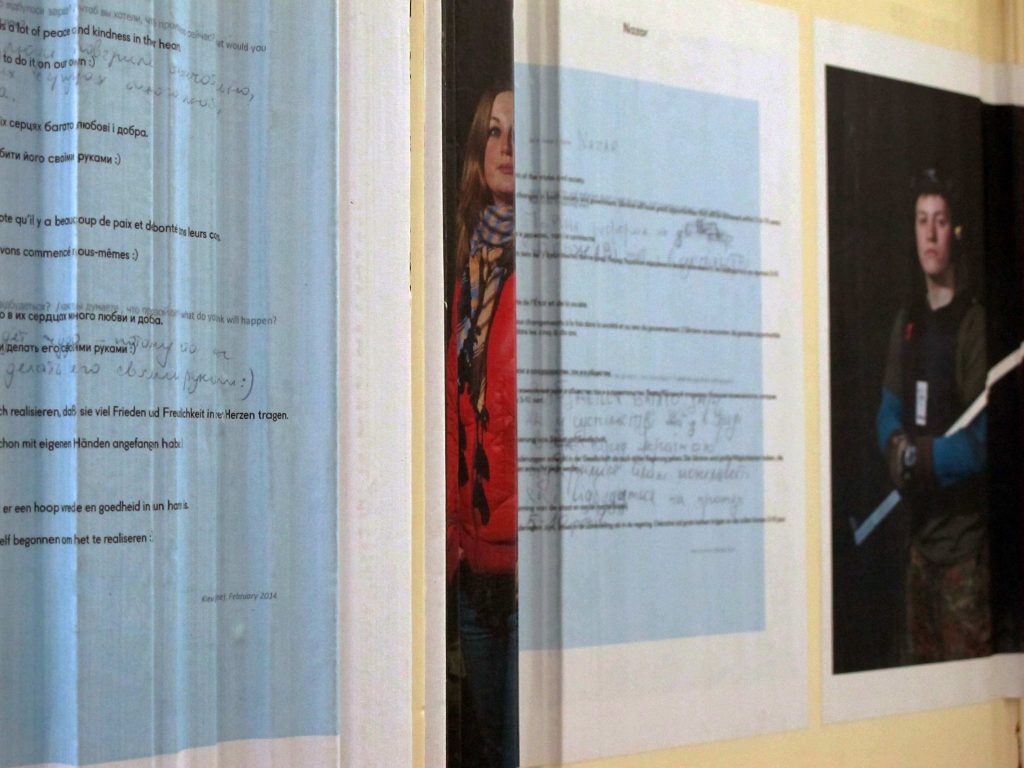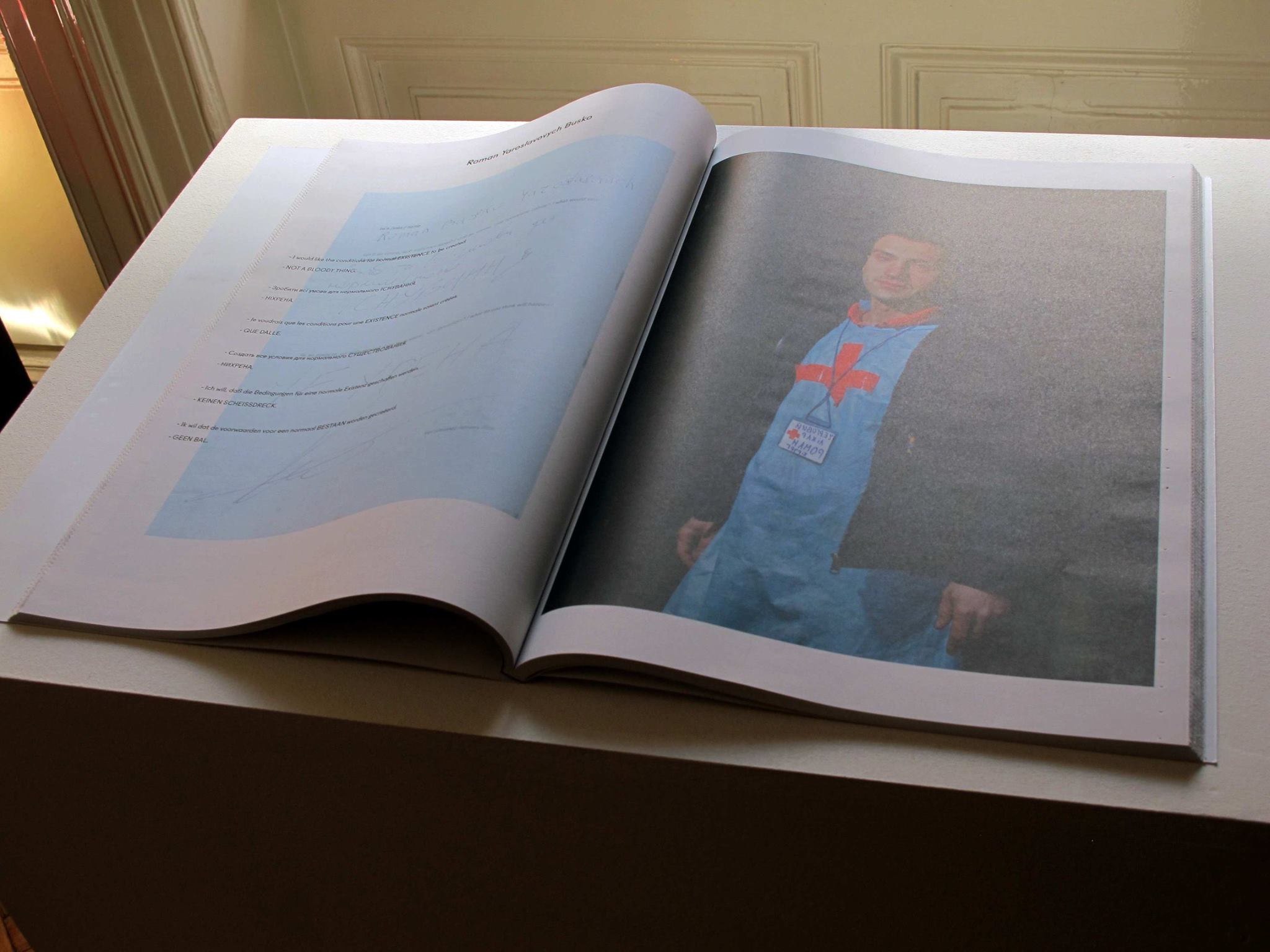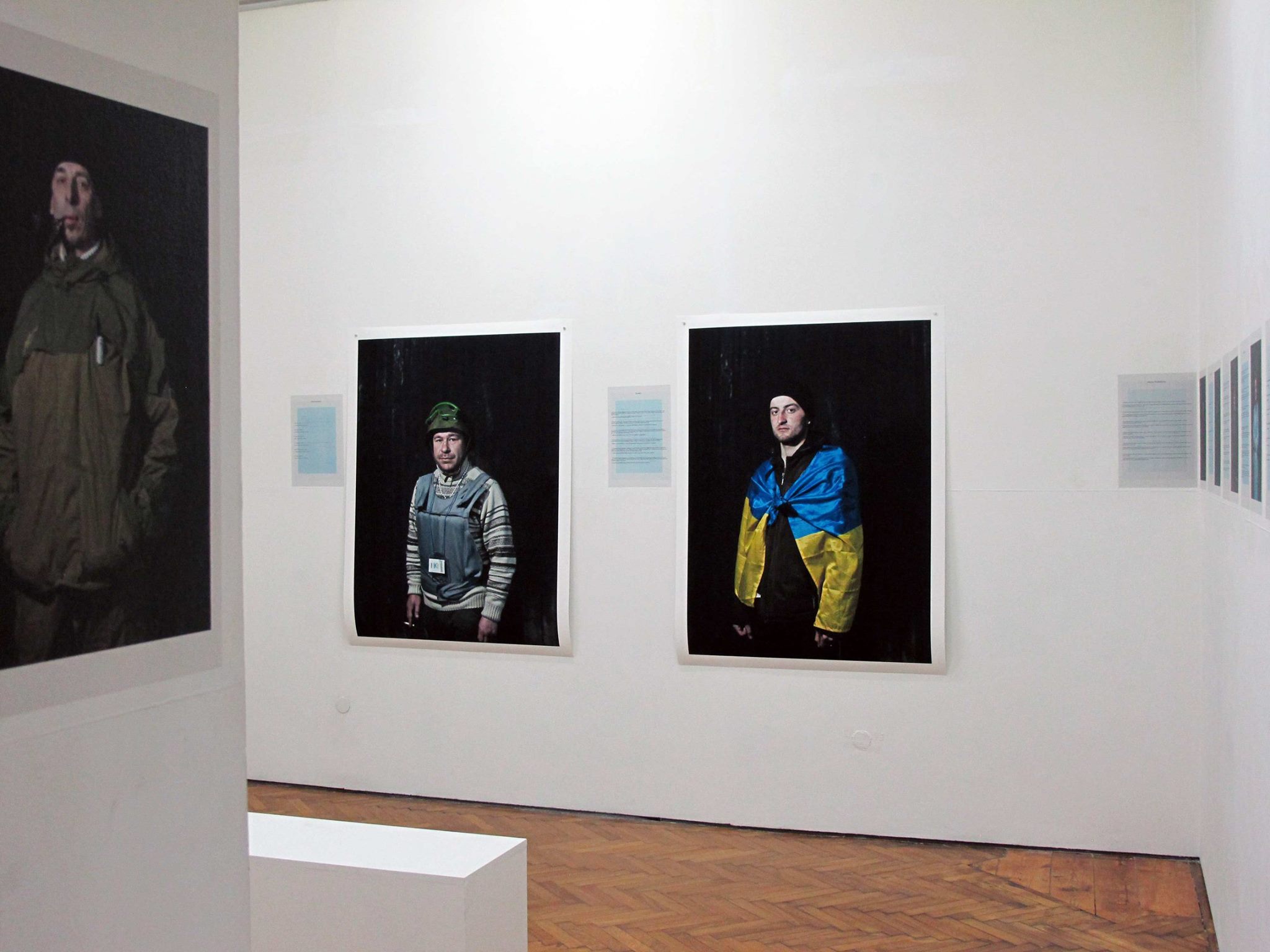
A new exhibition in Sarajevo uses protesters’ faces to show another face of the protests at Maidan square during the revolution in Ukraine.
On 1 July 2015, the exhibition ‘Maydan – Hundred Portraits‘ opened at Duplex 100m2 gallery as a part of the WARM Festival in Sarajevo. Two days later, a discussion with the photographer, Emeric Lhuisset, took place at Kino Meeting Point.
Lhuisset grew up in France and currently spends his time between the Middle East and Paris. Across Afghanistan, Pakistan, Iraq and Colombia, Emeric Lhuisset combines his background in geopolitics with his talent for visual arts, questioning representations of conflict and our perceptions of it. When asked to describe his work, he replies, “I am not a photojournalist. I would more define myself as a visual artist.”
With the exhibition ‘Maydan – Hundred Portraits’, Lhuisset introduces us to the Ukrainian revolution of February 2014. The main square in the center of Kiev, Maydan, is the site on which thousands of Ukrainians united in protest against government corruption and Russia’s grip on their country. The situation quickly escalated when protesters were fired upon by the authorities, leading to the deaths of more than 100 people, now referred to as the “Heavenly Hundred”.
“When I saw what was happening in Ukraine, when I saw that the government opened fire on the demonstrators, I couldn’t watch the events on television without taking action,” says Lhuisset. “So I decided to go there and see for myself what was really going on, to witness what was taking place,” he adds.
Lhuisset did not know what he was going to do when he hurriedly left for Ukraine. When he arrived in Kiev, former President Yanukovych had fled and his government had just fallen, the police had disappeared from the streets and, for a few days, the power belonged to the people. Everything seemed possible.
He started to compile a series of 100 portraits of activists and demonstrators of the Maydan movement. “The 100 portraits are in fact a deliberate choice,” explains Lhuisset, “in honor of the 100 people who were killed on Maydan.”
Lhuisset set up his material in front of the charred door of the City Hall, and photographed passersby without any selection or bias. Before taking the pictures, he asked just two questions, which people answered on a sheet of paper: “What would you like to see happening now?” and “what do you think will happen?”
“I could have taken pictures of the demonstration itself and people on barricades,” Lhuisset explains, before adding, “But I think this project shows better what’s happening in Ukraine, who these demonstrators are and what they expect and desire.”
Indeed, Lhuisset does not believe that you need to be “a photojournalist” or to “collect snapshots of action” to cover a conflict. In this project, Lhuisset wanted to both witness and understand the motivation of the protestors.

He then gathered the pictures and answers in a book, which was printed on newspaper stock “in order to match with the urgency of the situation.” The book and the exhibition consist of the same basic material: a tabloid sized printed newspaper of 224 pages. The 100 portraits are included, together with a reproduction of hand-written statements transcribed in Ukrainian, Russian, English, French, German and Dutch.
Lhuisset also chose a form of bookbinding that allows anyone to easily remove the pages so that they can be glued on a wall, thereby allowing everyone to make their own exhibition. He explains, “I wanted to give back the voices to the people and to do a democratic exhibition.”
The exhibition was first displayed in the Donetsk region in eastern Ukraine. Lhuisset posted the portraits on the streets, “in order to counter [the Russian] propaganda and show to the population who the people of Maidan really were.” When he put the portraits in the streets of Sloviansk, one of the focal points in the early stages of the conflict in 2014, he was surprised and happy to notice that almost everyone stopped, read, discussed and sometimes even fought or debated the pictures and answers. “I think the project had a real impact on the city of Sloviansk,” says Lhuisset.

The complete exhibition, featuring all 100 photos, was later presented in Amsterdam in September 2014 and then in Kiev as part of the International Media Meeting. The conference discussed the topic of freedom of press in post-Soviet countries, but also in France, in Phnom Penh, Cambodia, and in Aleppo, Syria.
Interestingly, when questioned about the reaction of the visitors to the exhibition in the countries where it was presented, Lhuisset explains that the strongest reactions were actually in France. There, the National Front accused him of spreading the ideology of Ukrainian neo-Nazis and fascists, which is, according to him, “kind of ironic.”
Looking to the future, Lhuisset’s main goal is to travel further afield with ‘Maydan – Hundred Portraits’, so that it can continue to have an impact on people and show them a different representation of contemporary events in Ukraine.
This article was published in collaboration with Warscapes. The WARM Festival took place in Sarajevo from Sunday 28 June to Saturday 4 July 2015. Run in collaboration with the Post-Conflict Research Center, the WARM Festival in Sarajevo brings together artists, reporters, academics and activists around the topic of contemporary conflict.






